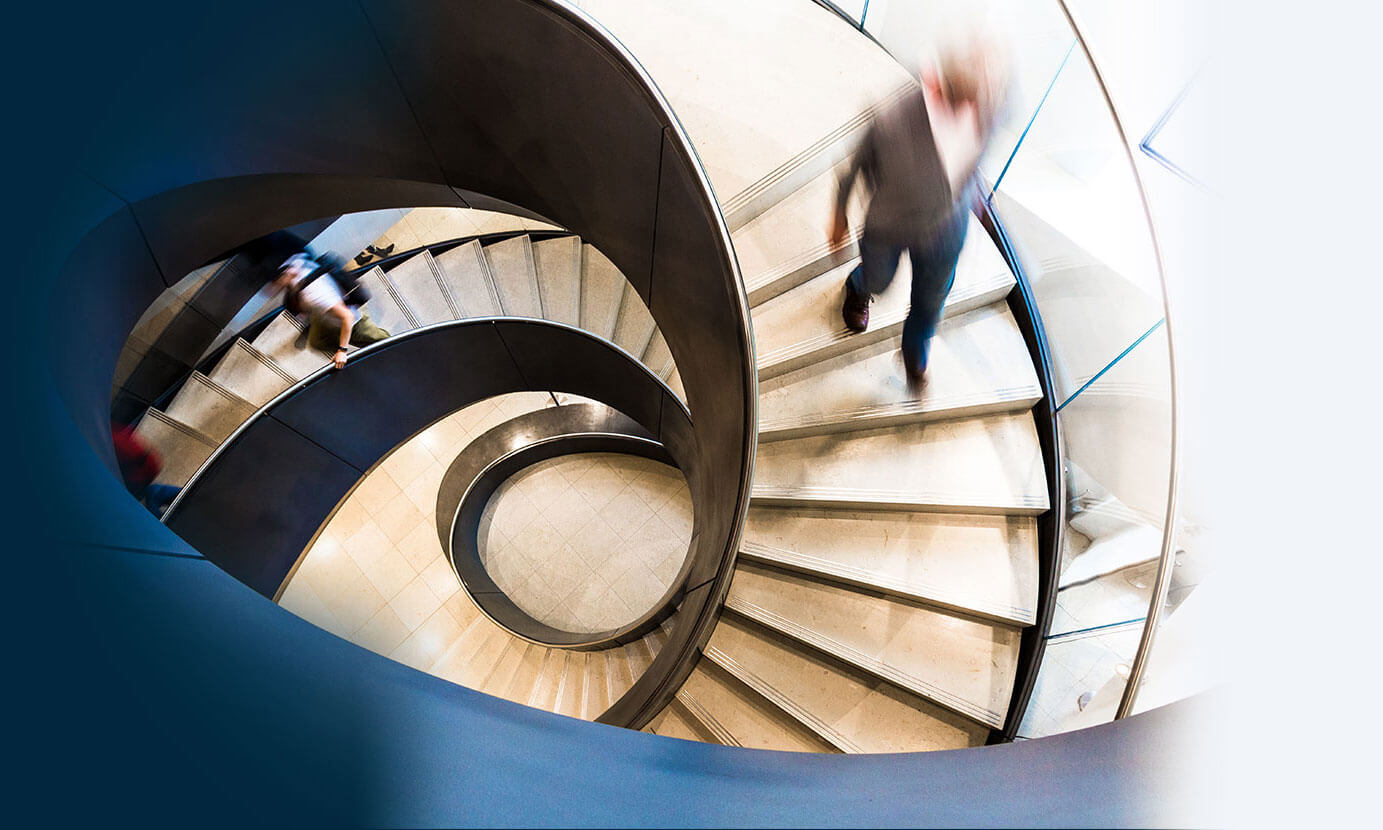Liposuction Thousand Oaks
Liposuction, or suction-assisted lipectomy, is a surgical procedure for removing modest amounts of superficial fat. It is not a method for weight loss or total body “makeover.” It is used to target specific areas of the body that do not respond to exercise and weight loss. It can help contour these sites and blend them in with the surrounding areas. The term lipodystrophy is used to describe a “problem” area of fat deposition. Our surgeons have written a book chapter about liposuction that explains the procedure in detail.
Before & After Photos
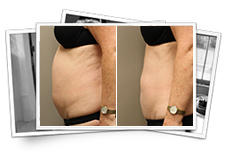 LIPOSUCTION
LIPOSUCTION
At the Kryger Institute of Plastic Surgery, we have experience in a vast array of surgical and non-surgical procedures. Click below to see some before and after photos of liposuction.
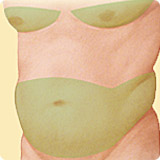 Commonly treated areas in men include the breast region, the lower abdomen, and the flanks.
Commonly treated areas in men include the breast region, the lower abdomen, and the flanks.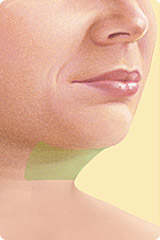
The neck can be contoured and defined with liposuction.
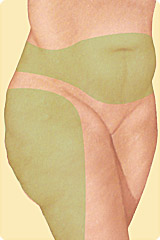
Areas treated effectively in women include the abdomen, the hips and the thighs.
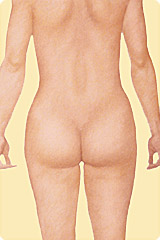
The lower back, flanks, thighs and buttocks can be suctioned to create a pleasing contour and shape.
Who Is a Good Candidate for Liposuction?
Women or men who have specific areas that they want to contour are good candidates. Common problem areas of lipodystrophy in women include the abdomen, hips, buttocks, inner and outer thighs, inner knee region, and the neck.
In men, the neck, abdomen, flanks (“love-handles”), and chest are common sites that respond well to liposuction. Patients should be at their ideal body weight, or only slightly overweight.
Obese patients will not benefit to any significant degree from liposuction, and are at greater risk of developing a complication related to the surgery.
What is the difference between
There are various forms of liposuction, including traditional liposuction, laser-assisted liposuction, VASER, and ultrasonic liposuction. Some doctors will claim that they use a superior type of liposuction, or the newest technology in liposuction. All of the aforementioned devices essentially achieve the same goal using slightly different techniques.
The fact of the matter is that there has never been a scientific study proving that any one technique or device offers better results.
One exception is the use of ultrasonic liposuction in certain situations. It works better for areas that have tough, fibrous fat, such as the male breasts and upper back. Ultrasonic liposuction generates more heat and causes more tissue damage than the other types of liposuction. This leads to a slightly higher risk of contour irregularities, and other minor complications.
At the Kryger Institute, we pride ourselves on putting patient safety first. As new technologies emerge, we continue to embrace those that have demonstrated efficacy and safety. We currently offer both traditional and ultrasonic liposuction. Talk to Dr. Kryger about which technique is best suited for you.
What Is the Cost of Liposuction?
Because insurance companies do not consider liposuction to be medically necessary, carriers do not cover the cost of this procedure. It is important that you discuss all the costs and fees during your consultation.
If the liposuction is performed in conjunction with another procedure (e.g. a hysterectomy or hernia repair), it is possible to have part of the operating room and anesthesia fees covered by your insurance carrier. Our surgeons have published a scientific paper that addresses the issues involved in combining liposuction with other procedures.
Preparing for Surgery
Tell Dr. Kryger about any medical problems you have, and any problems you may have had with surgery in the past. Inform him what medications you take-both prescription and non-prescription (including herbs and dietary supplements).
You will be told which medications to stop and which to take before surgery. Aspirin and anti-inflammatory medications such ibuprofen and Aleve must be stopped for 7 days before surgery.
You must also strictly follow the instructions about when to start fasting before surgery (usually at midnight). If you get sick or have any health issues in the days before surgery, please notify the office at once in case we have to postpone your operation. If you smoke, you should quit for 4 weeks before and 4 weeks after the surgery.
Surgery and Incisions
The operation itself takes 1-2 hours depending on how many areas are treated. The morning of surgery, your surgeon will mark the sites to be suctioned, and will answer any last minute questions you may have.
The incisions from liposuction are less than a quarter of an inch and quite inconspicuous. There will usually be 1-2 incision sites per site to be treated; however, these are planned in such a way that they are barely visible.
The Anesthesia
Liposuction can be performed under “twilight” anesthesia or general anesthesia. Twilight anesthesia consists of intravenous sedation and pain medication that keeps you relaxed and sleepy during the surgery. In addition, Dr. Kryger uses local anesthesia to numb the abdomen.
General anesthesia involves going completely to sleep with a breathing tube in your throat. There is a slightly higher risk of nausea and vomiting after general anesthesia; however, both techniques are extremely safe. Dr. Kryger will discuss the anesthetic options with you before surgery.
What Kind of Dressings and Drains are There?
You can remove the gauze dressings the day after surgery. It is normal for a small amount of fluid to leak from the incisions for the first few days. This fluid looks like “Kool-aid” or fruit-punch and is part of the normal healing process. If you have leaking fluid that persists more than 48 hours after surgery, call the office.
If there is tape or adhesive strips directly on your incision, do not remove these. If they fall off in the shower, there is no need for concern. You can reinforce any leaking sites with gauze or a maxi-pad.
If you are given a garment at the time of surgery, you should wear this as often as possible for the first couple of weeks. Do not purchase a garment on your own without checking with your surgeon first.
It is rare to need drains after liposuction. The one exception is large volume liposuction of the abdominal region. If your surgeon is planning on using a drain, he will inform you of this ahead of time. The drain helps remove the fluid that is produced under your skin as part of the healing process.
Without drains, this fluid can accumulate, causing what is called a seroma. The drain stays in until the drainage is less than 25 ml per drain in a twenty four hour period. This usually takes 3-5 days, but can be shorter or longer in some cases. The drains are easy to take care of, and do not hurt to take out.
Can You Go Home the Day of Surgery?
Liposuction can be done safely as an outpatient procedure, and most patients will be able to go home the same day.
In some cases, your surgeon may recommend that you spend a night in the hospital after surgery. This is most common after large volume liposuction (greater than 5 liters), and the purpose of the overnight stay is to monitor you closely while the fluids in your body equilibrate.
Some patients may prefer to spend a night or two in the hospital on their own accord if they have young children at home or live alone and do not have any help at home.
How Much Pain is There After Surgery?
Pain from liposuction is variable, and ranges from minimal to moderate. It is only bad for the first day or two after surgery, but then it rapidly improves. Compared to other cosmetic surgical procedures, the pain after liposuction is mild. Most patients complain of soreness rather than pain. If you have done well with surgery in the past, you will likely be fine after this surgery.
Our surgeons have a lot of experience treating pain, and have published scientific articles and written book chapters about anesthetics and pain control. They will do everything possible to minimize your pain, such as utilizing all the newest pain medication and using a multimodal approach to pain management.
Within a few days, most people’s pain is controlled with plain Tylenol or Motrin.
What About Swelling and Bruising?
Swelling and bruising are normal signs of the healing process. They occur after any surgery to varying degrees. Swelling peaks at about 48 hours, and then rapidly decreases.
By the end of the first few weeks, 50 percent of the swelling is gone. By 6-8 weeks, a majority of the swelling has diminished. By six months, almost all the swelling is gone. Any remaining swelling is almost not perceptible. Bruising is worse the day after surgery and then rapidly gets better. It usually dissipates completely two weeks after your surgery.
What Restrictions are There?
You can shower the day after surgery, but you should not take a bath, use a hot-tub, or go swimming for at least a week. Walking and mild stretching exercises can be resumed within days of surgery. Strenuous activities such jogging, aerobics, weight-training, sit-ups, and sex should not be done for at least a week after surgery.
When Can I travel?
Traveling after surgery (air travel, long distance car trips, train rides, etc. ) should not be done until you have had your first postoperative visit. Typically, this occurs 5-7 days after surgery. Patients who are at high risk for developing a blood clot should not travel until instructed by their surgeon. Short car trips under 60 minutes can be done before the first visit.
A good rule of thumb is when you are off the stronger pain medication and can get up without assistance, you are ready to go out. You should not drive the car yourself, however, until you are off pain medication.
When Can I Go Back to Work?
This, of course, depends on the kind of work you do. Most people go back to work after 3-4 days. Sedentary jobs, such as computer work or talking on the phone can begin even sooner.
If you have a strenuous job that involves a lot of lifting or physical activity, you may have to wait 1-2 weeks until you are ready for work. Please review the restrictions for further guidelines about getting back to work.
What Kind of Scars Can I Expect?
Scarring is an unpredictable part of any surgery. It is impossible to cut through the full thickness of the skin and not have a scar. Our surgeons have published numerous scientific papers about the scarring process and wound healing, and will do everything possible to minimize scarring.
To a large extent, however, scarring is determined by your genetics. If you are prone to hypertrophic (wide, raised) scars or keloids, make sure to inform your surgeon ahead of time. Our surgeons will use all the available techniques to minimize your scars based on their extensive research experience on hypertrophic scarring.
Your scars will be firm and pink for at least six weeks. After six weeks, scars are very strong and can withstand any activity. Then they may remain the same size for several months, or even appear to widen. After several months, your scars will begin to fade, although they will never disappear completely.
It takes 1-2 years for a scar to completely heal. Make sure to apply sunscreen containing zinc-oxide to your scars for six months so that they do not darken due to increased pigmentation.
What If I Have a Problem or Question?
The Kryger Institute welcomes calls from patients. If you have any concerns at any time, please feel free to call our office.
If it is an emergency, the answering service is available 24 hours a day, including weekends and holidays. There is always a plastic surgeon on call. Your surgeon will discuss all the risks and potential complications with you before surgery. You will receive detailed instructions about situations that warrant a call to the office.
Schedule Your Consultation Today
If you think you are a good candidate for liposuction and would like to learn more about this procedure, contact the office of Dr. Gil Kryger to schedule a consultation today.
Dr. Kryger is a highly acclaimed board-certified plastic surgeon in the Thousand Oaks, CA area who will be happy to see you for a consultation and will answer any questions you may have about this procedure.

